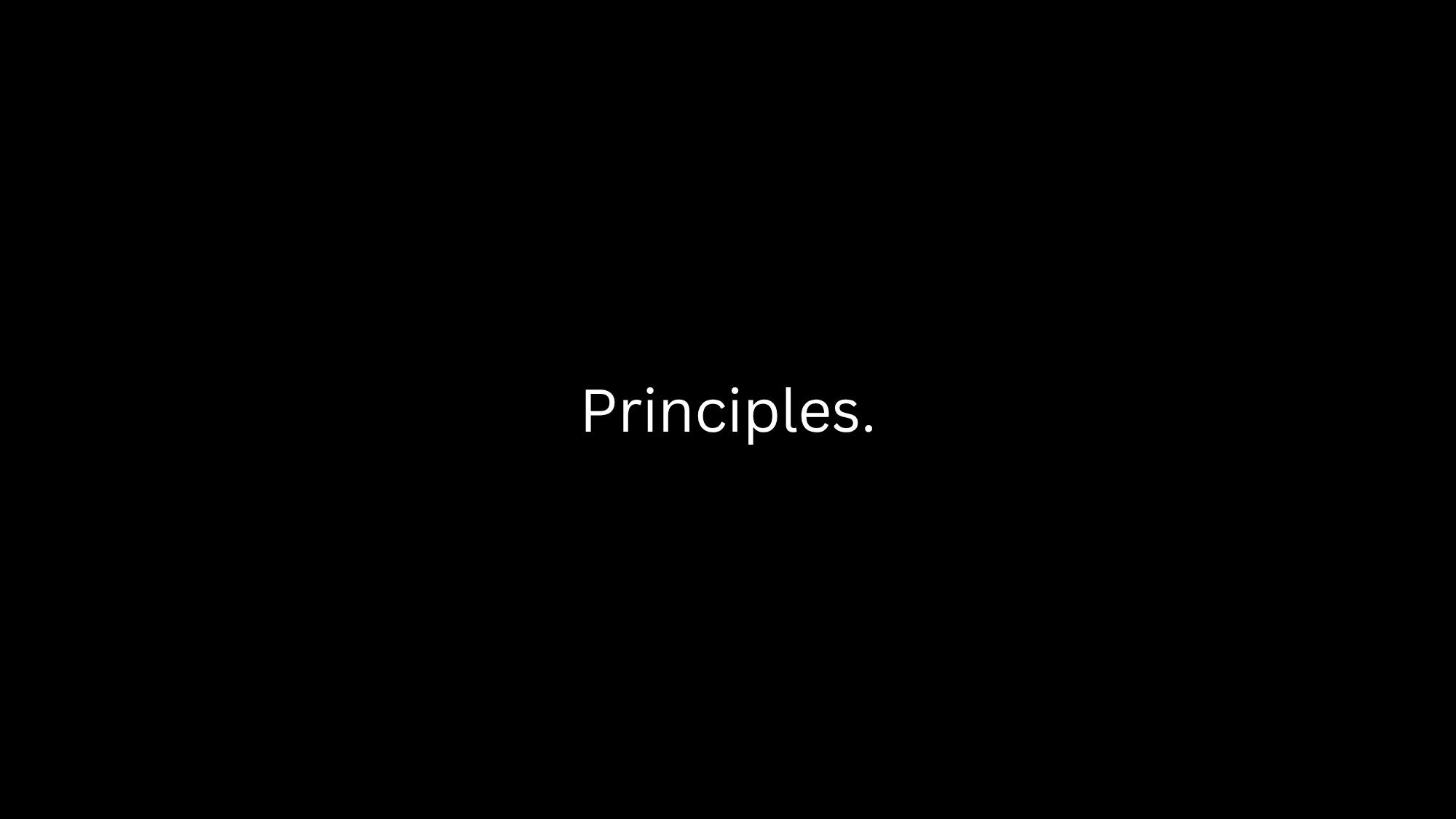

How to annoy someone without even realising (7 mins read)
Yesterday me and my mum went round my brothers house for a barbeque.
The sun was shining, spirits were high and we were all looking forward to the food.
We got there before my brother finished work but as soon as he returned he seemed stressed.
"I've been trying to sort out this bloody car all week" he said with a sigh. "The lease is up and I've got to take it back to the garage to trade it in for another one, but they're super picky with the inspection so I've got to clean the car tonight inside out so it looks spotless."
So my mum, clearly seeing her son was stressed, tried to relieve him of yet another thing to do that evening and said "can't you just clean it tomorrow when you've got more energy?"
"No, it's fine, I'll clean it tonight" my brother hastily responded.
"Are you sure?" my mum questioned.
"Yes" my brother said sharply.
"Well, I'm sure they won't notice if you don't clean it" my mum calmly suggested.
But then my brother snapped.
"Mum, why do you keep trying to change my mind on a decision I've already made? I'm going to clean the car tonight and that's that."
So my mum stopped prying. Dumbfounded as to what she'd done wrong.
Perhaps this sounds like a normal interaction between a mum and her son (and trust me, conversations like this happen everyday in my family). But conversations like this are a lot more dangerous than you think.
So why did my brother get so annoyed?
Although my mum was trying to relieve him of another stressful task to do, what she was actually doing without realising it was making him more stressed by questioning a decision he'd already made. The technical term for this is she invalidated his decision.
Because here's the thing...
Decision making, no matter how inconsequential, is stressful enough without having someone close to you question your decisions.
Luckily in the end my mum understood she pissed my brother off because on the way home she asked me "what did I do wrong?" and I said...
"Look mum, I understand you were trying to help Sam feel less stressed and reassure him he didn't need to clean the car, but his decision was already made. So all he wanted was to think out loud about his decision while hearing something along the lines of "ok, no worries, I can take care of the food while you clean the car" or a simple "ok". Next time, unless he's made a decision you genuinely disagree with, just hear him out and say "ok"."
So to make this practical, and to avoid the people in your life responding to you like my brother did to my mum, the next time someone comes to you to think out loud about a decision they've made, just hear them out and let them make that decision.
Just let them.
Because even if it turns out to be a bad decision, at least they'll learn through their own experience, which is a much better teacher.
But what if you genuinely think it's a bad decision?
1.) First validate the other person's emotions and situation by reflecting their words back to them.
2.) Then calmly suggest your alternative.
To use the above example, this would sound like...
"I've been trying to sort out this bloody car all week. The lease is up and I've got to take it back to the garage to trade it in for another one, but they're super picky with the inspection so I've got to clean the car tonight inside out so it looks spotless."
"So you feel stressed about this situation because you think if you don't clean the car properly tonight they won't accept it back?"
"Yes."
(If you don't get a "yes" keep reflecting until you do).
Now express your concern.
"Ok. I'm just a bit worried you're going to be cleaning the car all evening and won't have time to relax after a long day. Is there any chance you could clean the car first thing in the morning instead?"
"No."
"Ok, no worries."
Job done.
You've validated how they feel, genuinely expressed your concern and suggested an alternative. Better yet, you haven't gone too far in expressing your alternative. You've made your point and given the other person time to think. As the saying goes; when you've made your point, stop talking.
Who knows, they might even think about your suggestion after the conversation and realise it's a better option.
Go deeper...
Validating other people correctly improves relationships, decreases conflict, increases influence and increases self-compassion. So if you want to learn how to do so like a pro, what follows is Caroline Fleck's 3 step framework on how to validate anyone; mindfulness, understanding, and empathy.
Caroline is the go to person on this topic and she's just published her book Validation: How the Skill Set That Revolutionized Psychology Will Transform Your Relationships, Increase Your Influence, and Change Your Life (2025).
1.) Be mindful of the other person: Attend and Copy
"Attending means paying attention and listening without judgment, in a way that shows interest and cultivates understanding." - Caroline Fleck
There are 4 key non-verbal behaviours that signal you're attending to someone:
- Eye contact
- Head nodding
- Gestures (hand to the chin etc.)
- Proximity (leaning in close etc.)
The key to doing these 4 naturally is to be intentional as to why you're doing them.
You're not doing them to show off or pretend to attend. You're doing them to genuinely help you attend to the other person.
Another way to attend to someone when you don't like their ideas or you disagree with them is to do something called the A game.
To play the game, you collect as much information in response to these 2 questions:
1.) What’s a better way to make this person’s point?
2.) Why does it matter to them?
Note: playing this game can be distracting. Because you're trying to attend to the person but also gather information.
Another way to attend to someone is to copy their words and body language (otherwise known as mirroring).
Although you don't want to be a parrot, simply mirror back to the person the last 1-3 words they've said to demonstrate understanding.
And if they are stood with their hands on their hips, subtly do the same. This will help the other person relate to you better and feel more comfortable.
2.) Show that you understand: Contextualise, Equalise, and Propose
"Contextualising acknowledges that something a person does or feels makes sense in some context, even if it seems ineffective or unjustified. As an understanding skill, it demonstrates not only that you’re paying attention but that you see the logic behind someone’s thoughts, behaviour, or emotions." - Caroline Fleck
Essentially this sounds like; "given X, Y makes sense."
For example:
- If I’m speaking with someone who’s embarrassed about the fact that they’re still afraid to drive following a car crash years ago, I might say: ‘I know the accident was a long time ago, but I imagine it doesn’t feel that way to your body when you get in the driver’s seat.’
- Or 'I can see why it would be hard to trust people given the fact your ex cheated on you.'
Fleck suggests if you know someone well contextualising can be intuitive. If you don't, then you may need to gather more information from them in order to demonstrate something along the lines of; I see how the world has shaped you, and I don’t judge you for it.
Equalising communicates "anyone in your shoes would feel the same".
For example:
- ‘It makes sense that you’d want a second opinion; I’d want one too if I were in your shoes’, or, ‘I can see why you pulled your daughter off the football team, I wouldn’t want my child being coached by someone who belittled them like that.’
Contextualising and equalising are different due to the situations in which they're used.
Contextualising is used when you're trying to trace the longer and less obvious cause and effect of why someone would feel how they feel. Equalising is used to demonstrate someone's response is normal given the context of the immediate situation.
Proposing means to state what you think another person might be thinking, feeling, or wanting to do in a situation.
For example:
- "You must be starving" - to someone who's forgotten their lunch.
- "You must be thinking about leaving" - to someone who's just found out their partner is cheating.
- "I wonder if you don't feel some relief or peace now she's passed" - to someone who's grandmother with dementia has just died.
You'll likely be able to intuit what the person is feeling after copying and attending to them.
Or you might like to voice something you think they might be feeling but they're too hesitant to say, such as; "you must be feeling demoralised right now."
If worst comes to worst and you get it wrong, you can return to any of the above skills to try and get closer to an accurate reflection.
Finally...
3.) Demonstrate empathy: Take Action, Emote, and Disclose
"Taking Action has you directly intervene on another person’s behalf. For example, imagine that your spouse usually cooks dinner for the family, but they just got fitted for a cast after breaking an ankle, so they are struggling to get around the kitchen. You could try to validate their frustration by saying: ‘That makes sense, nobody would want to make dinner while balancing on one foot.’ But in this situation, unless you actually step in to help with dinner, they’re unlikely to feel validated." - Caroline Fleck
Taking action communicates you "put your money where your mouth is". You're not just going to stop at validating this other person with words, instead you're actually going to get involved with your actions.
Note: getting involved is risky. Simply because you risk helping the person do something they could do alone.
So to avoid this, ask yourself the "to act or not to act" questions before getting involved...
- Does the other person lack the resources to intervene themselves?
- Do they lack the skills to do what is required, and if so, are they incapable of developing them?
- Is Taking Action in this scenario consistent with my values?
Other ways of taking action could include:
- Reading the article your sister sent you.
- Leaving a review for your yoga instructor on google.
- Responding to someone's message when you know they're anxiously awaiting a response.
"Emoting means openly expressing your feelings, specifically, your feelings in response to another person’s experience. Emoting is distinct from Copying – Copying mimics another person’s reaction; Emoting reveals your own." - Caroline Fleck
There are three ways to go about Emoting:
- Non-verbal behaviour, such as a dropped jaw that shows your surprise at what the other person has experienced;
- Labelling your emotions, eg, ‘I’m so angry he said that to you’; and,
- Implying what you feel by describing what you think, eg, ‘I can’t believe he said that to you.’
By emoting you're demonstrating you're entering into someone else's experience, not as an outsider looking in but as an active participant.
"Disclosure has you share personal details about yourself that relate to another person’s experience. This doesn’t have to be reserved for highly classified personal information. For example, if you and someone else are talking and they mention feeling anxious about an exam they have coming up, you might mention that you once had to prepare for the same exam (presuming you did) and that you remember how stressful it felt. This would be a low-level disclosure." - Caroline Fleck
Disclosure is great when opening up is likely to cause shame in the other person or feelings of being different from others.
For example...
- Telling someone who's feeling depressed that you also felt hopeless when you felt depressed in the past can be a great form of validation.
Note: the risk you run here however is 'one upping' the other person's experience with your own.
So to avoid this, use a tool called 'deference' in which you finish your disclosure by highlighting how the other person's experience is more exciting, disappointing or unique.
My question to you...
- Who's someone in your life you'd like to validate more and why?
That's all for now.
Thank you for reading.
Lew
P.s. I'm back in the UK for a bit helping my mum move house. Weather is a lot cooler than Merida I'll tell you that 🤣. Also, just like in today's newsletter I'm going to start sending 2x newsletters per week (one about mental health and the other about social skills) to give you guys a better chance at remembering the information. One topic at a time. What do you think, sound like a good idea?
Quote of the week:

tHURSDAY'S THERAPY
Join 8934+ improving their mental health & social skills 1 Thursday newsletter at a time
Happy to have you here!
try refreshing the page and trying again!


.png)

.png)

.png)



.png)

.png)


.png)

